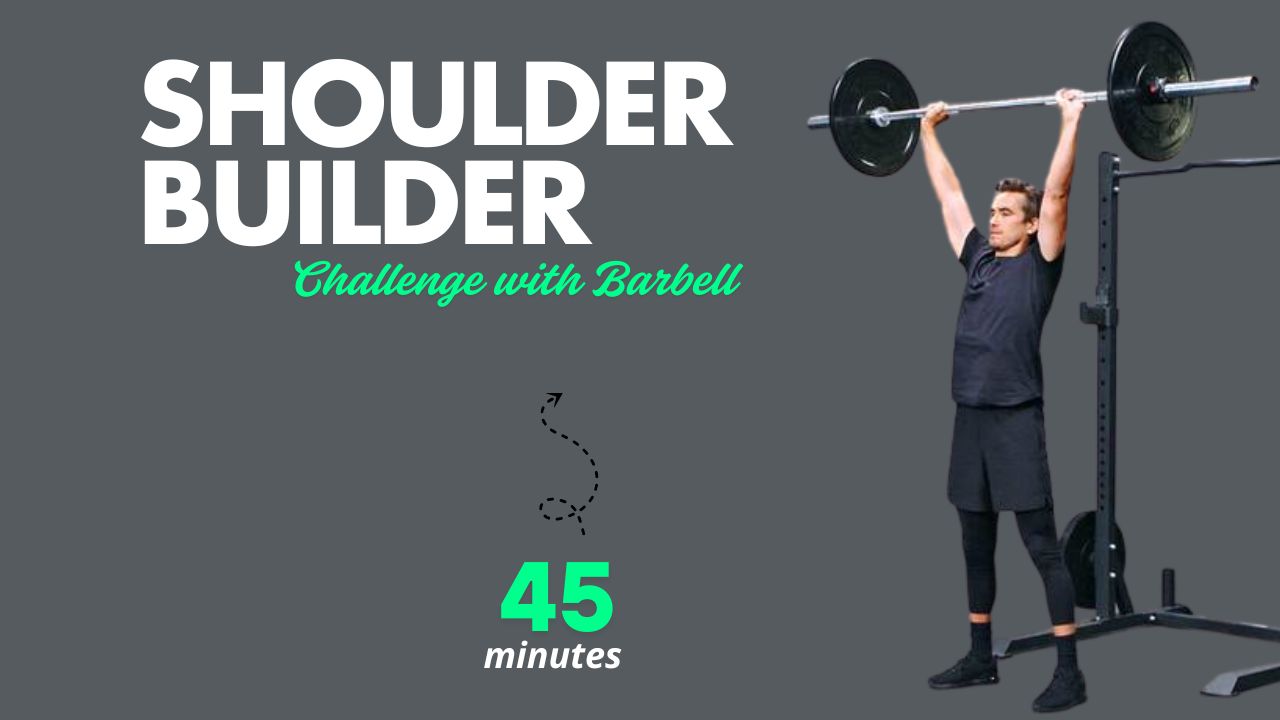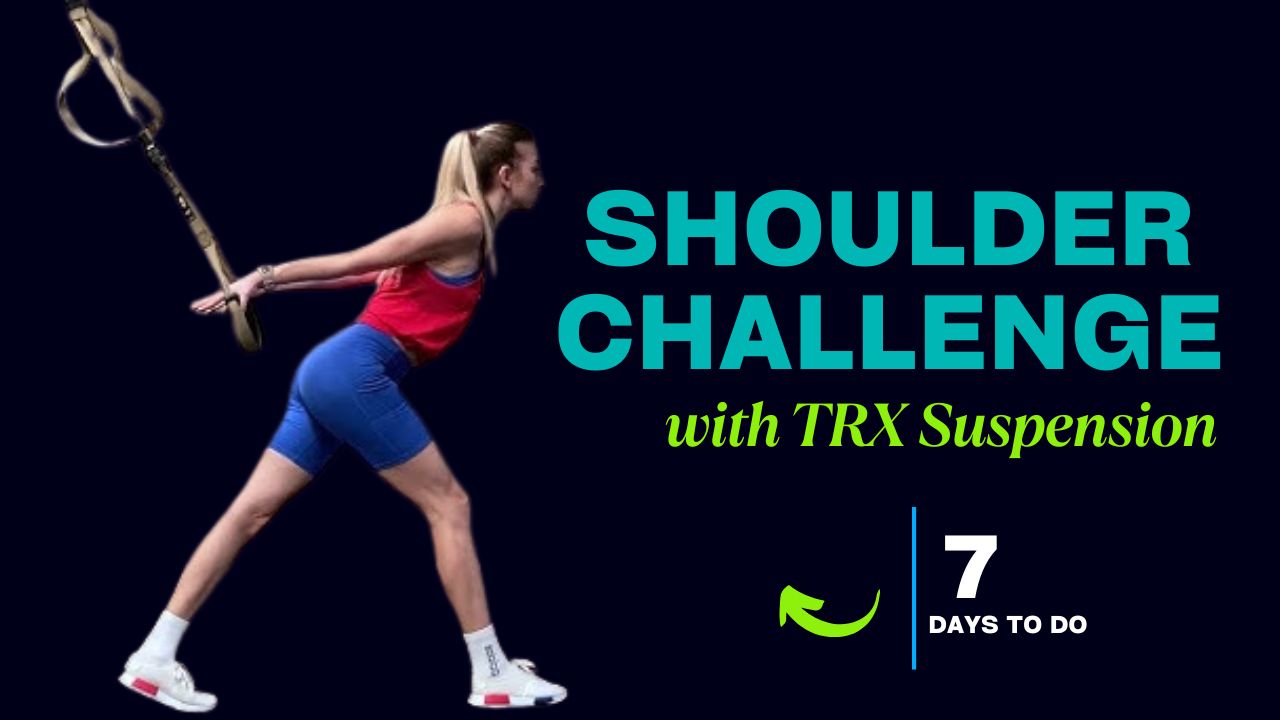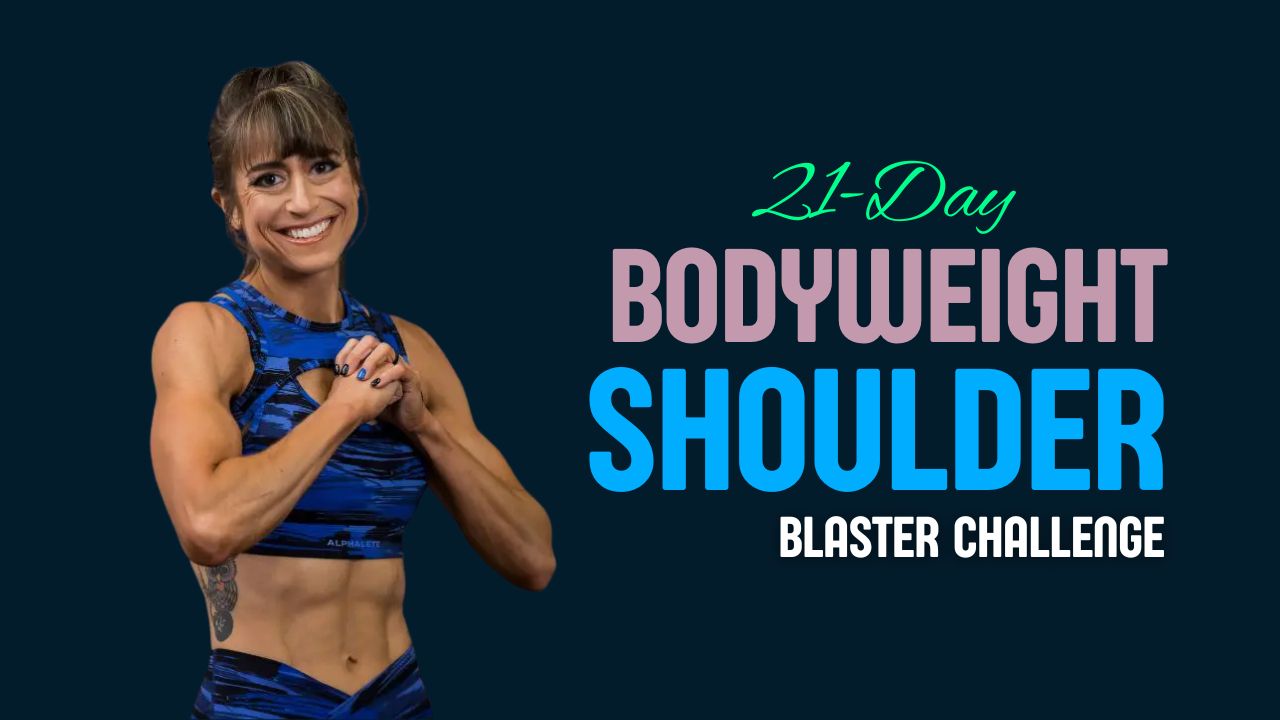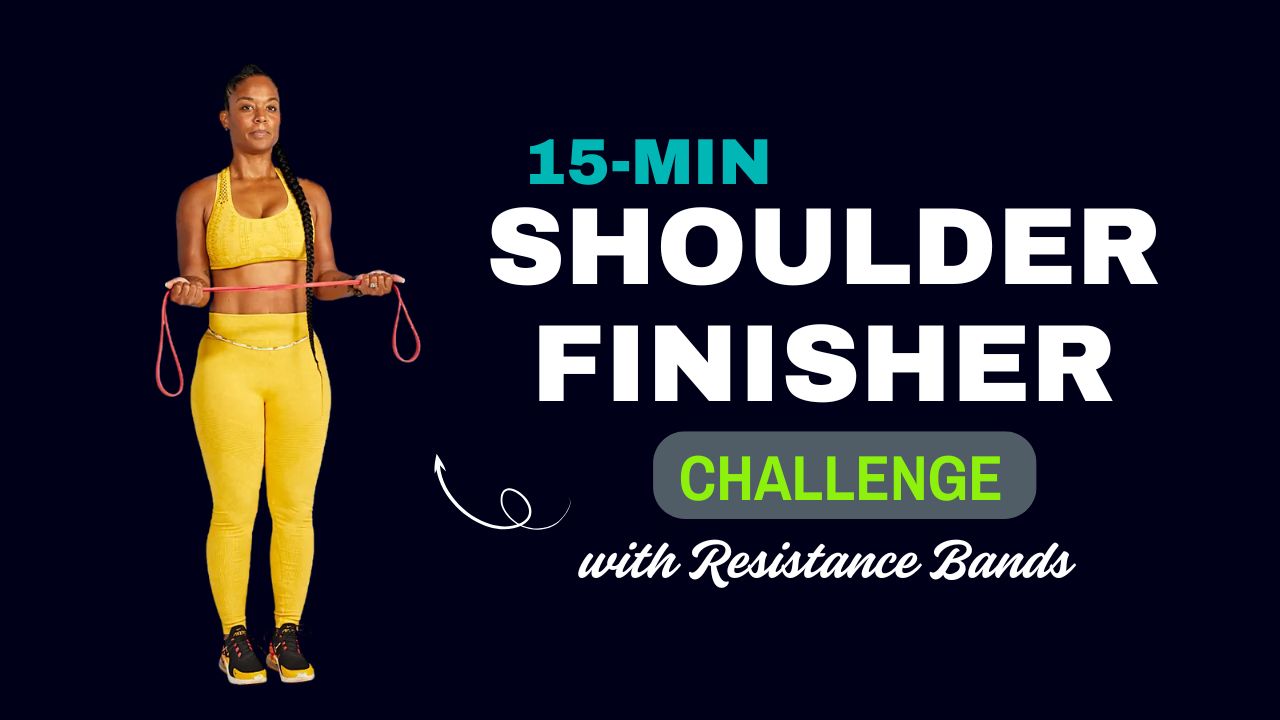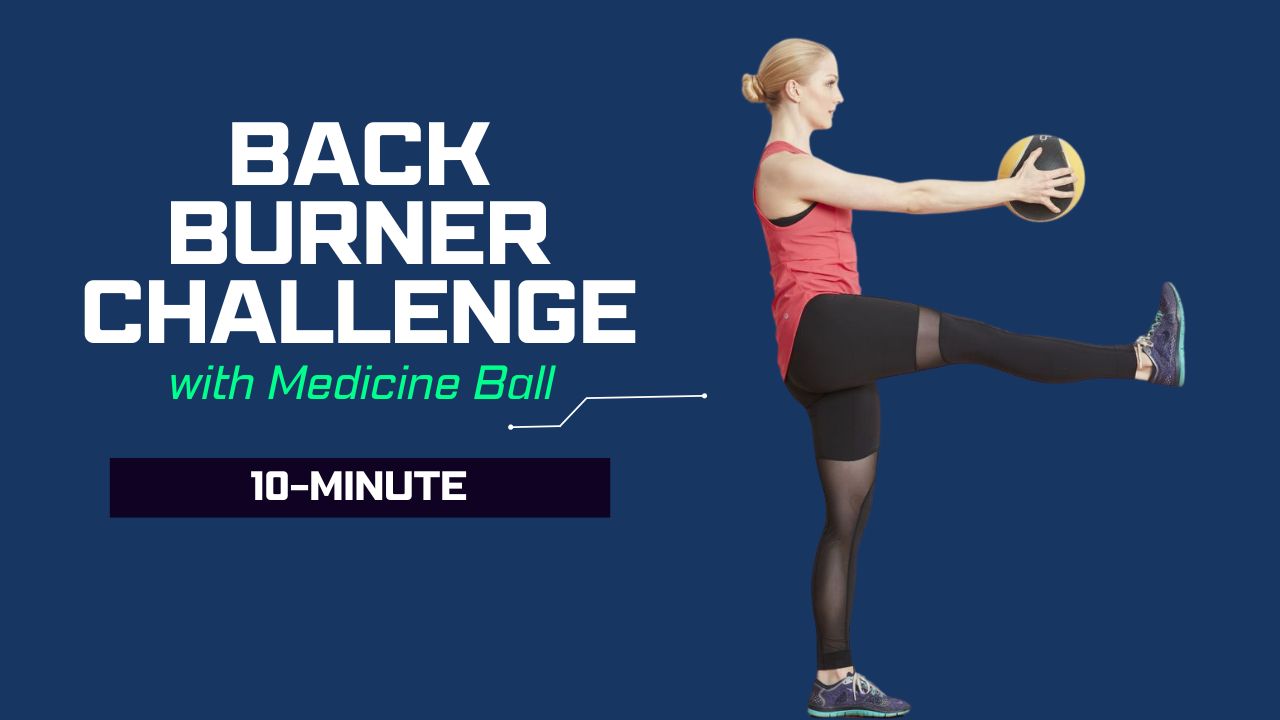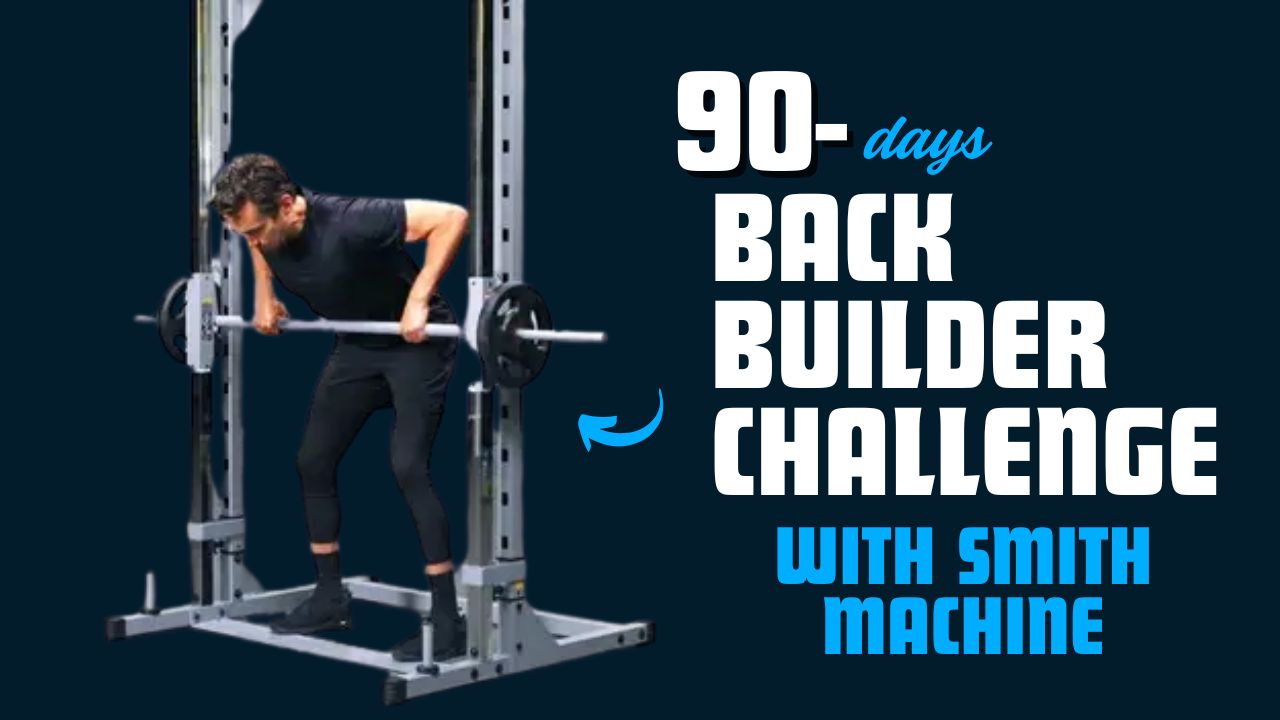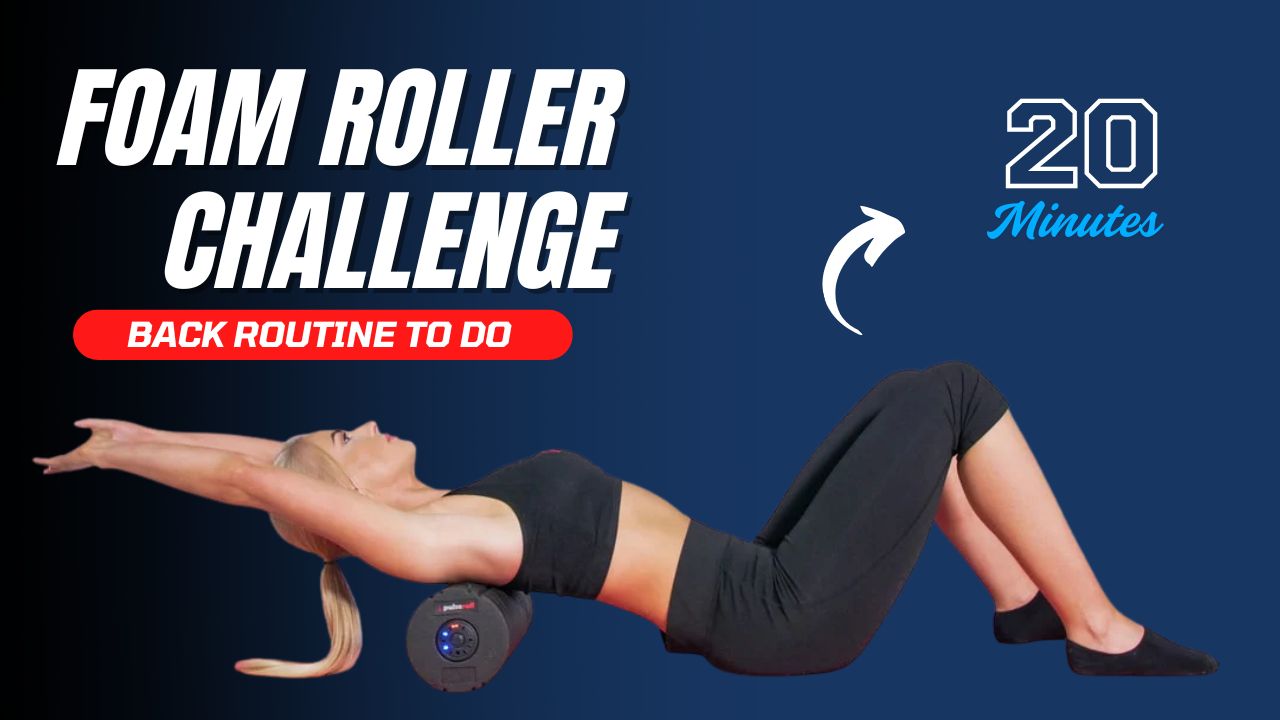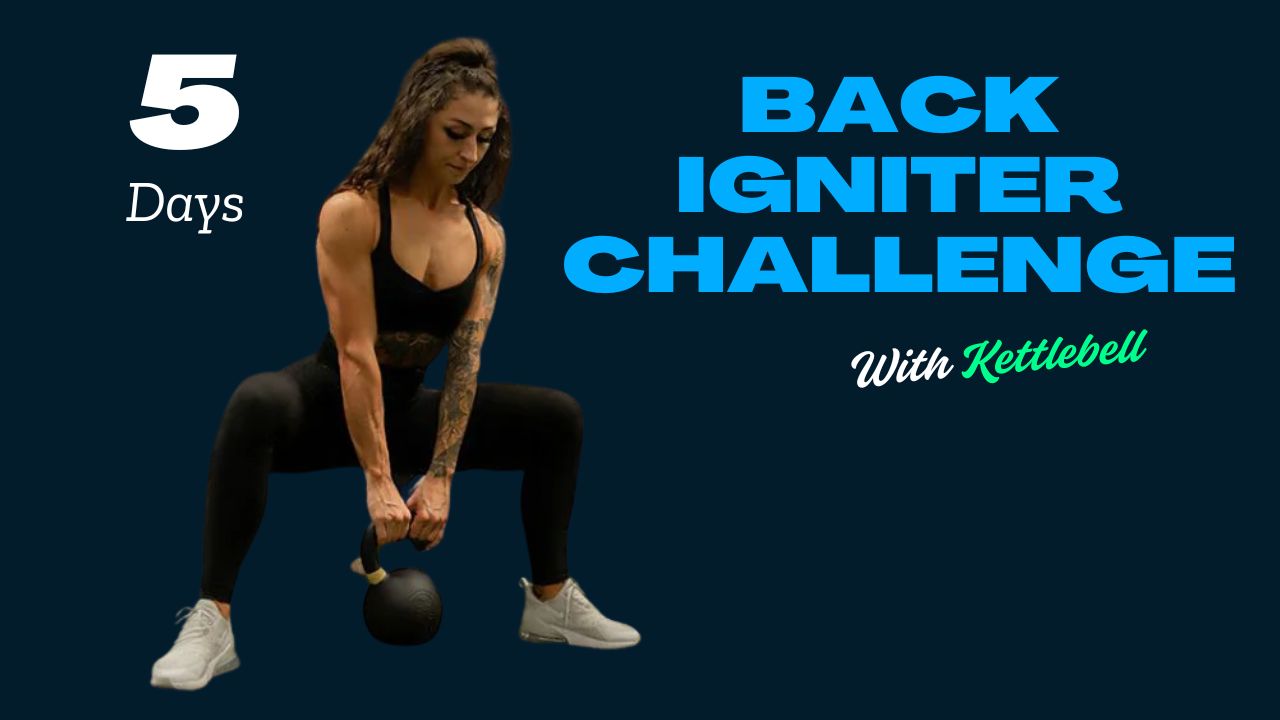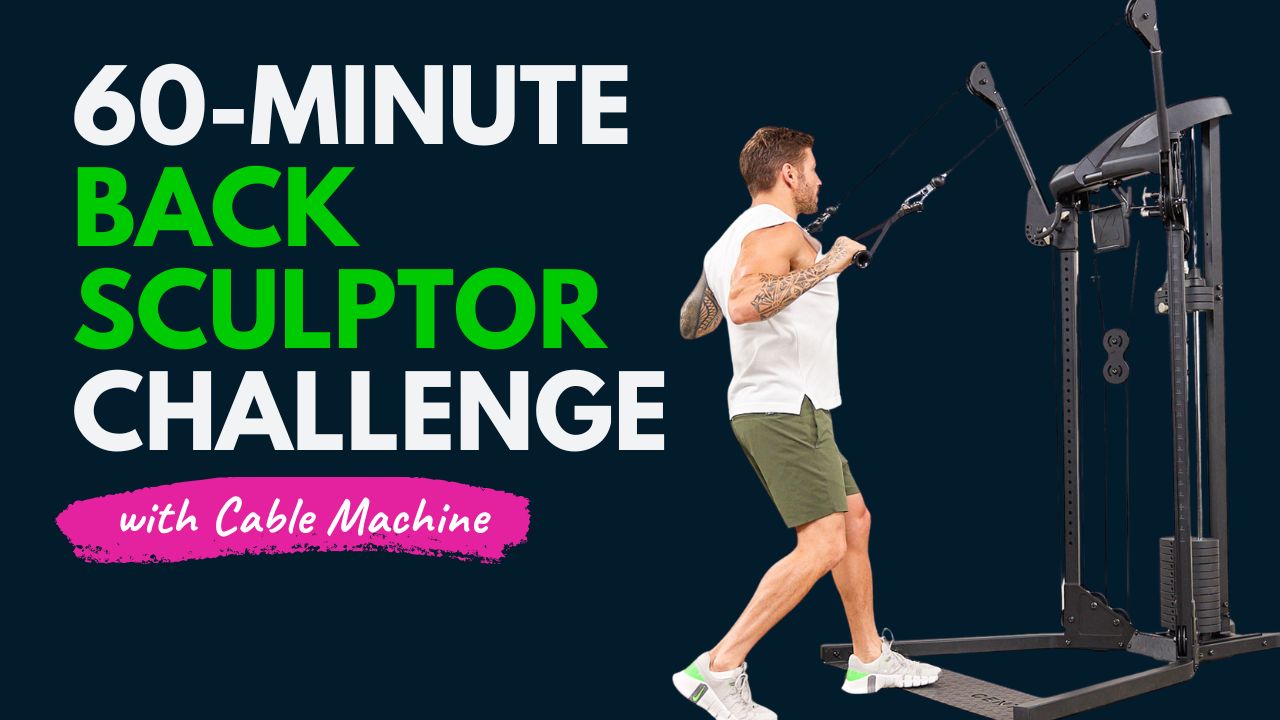Think kettlebells are just for swings and squats? Think again. Your biceps are missing out on serious growth potential.
While dumbbells often get the spotlight for biceps training, kettlebells offer a unique angle of resistance, challenging your muscles through increased tension, grip demand, and stabilizer activation.
If you’re looking to build thicker arms and stronger pulls, kettlebells might just be your secret weapon.
Did you know? The offset center of gravity in a kettlebell increases muscle recruitment—especially in the biceps and forearms—making each rep work harder for you.
Let’s dive into the 10 best kettlebell exercises that can help sculpt your biceps into bigger, stronger peaks.
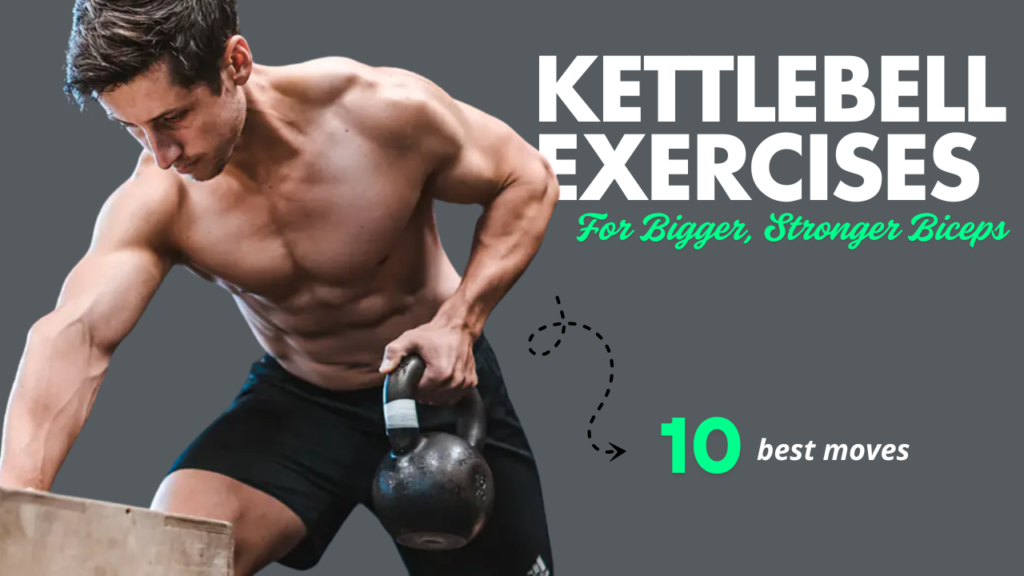
Table of Contents
What Can Happen After 30 Days of Kettlebell Biceps Exercises
| Positive Outcome | Description |
|---|---|
| Increased Biceps Size | Noticeable muscle fullness and slight increase in arm girth |
| Improved Muscle Definition | Better shape and visible lines in the upper arms |
| Stronger Grip Strength | Enhanced grip due to kettlebell’s offset weight and handle shape |
| Enhanced Mind-Muscle Connection | Greater control and contraction during curls |
| Better Arm Endurance | Ability to perform more reps or sets without fatigue |
| Stronger Forearms & Wrists | Due to stabilization demands in every curl |
| Reduced Muscle Imbalances | If using single-arm (unilateral) training, both arms become more balanced |
| Functional Strength Gains | Improved pulling, lifting, and everyday upper-body tasks |
| Boosted Confidence & Motivation | Visible results encourage continued training and commitment |
| Improved Posture & Core Stability | As a result of engaging your core during standing or unilateral exercises |
Also Read: 13 Best Dumbbell Hamstring Exercises for Stronger, Leaner Legs
Do’s and Don’ts of Kettlebell Biceps Exercises
| DO’s | DON’Ts |
|---|---|
| Use a weight you can control with proper form | Don’t use momentum to swing the kettlebell |
| Focus on slow, controlled reps for better muscle activation | Don’t rush through the movements |
| Keep your elbows close to your body during curls | Don’t flare your elbows out to the sides |
| Maintain a neutral wrist to avoid strain | Don’t let the kettlebell jerk or twist your wrist |
| Train both arms evenly (use unilateral work if needed) | Don’t let your dominant arm do all the work |
| Include variations to target both short and long head of biceps | Don’t stick to the same curl style every session |
| Use kettlebells for isolation and functional strength combinations | Don’t rely solely on kettlebells—balance with other training tools |
| Warm up before and stretch after training | Don’t skip mobility work, especially for shoulders and wrists |
| Engage your core during standing curls for better posture | Don’t arch your back or lock your knees |
| Allow 48 hours of recovery between biceps-focused sessions | Don’t overtrain your arms—growth happens during rest |
1. Kettlebell Biceps Curl (Standard)
A classic move with a kettlebell twist.
How to:
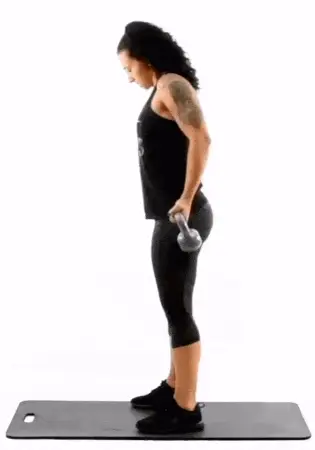
- Stand tall with feet shoulder-width apart.
- Hold one kettlebell in each hand, palms facing forward.
- Curl the kettlebells toward your shoulders, keeping elbows tucked.
- Lower with control.
Tip: Let the bell hang below your wrist—this makes your forearm and bicep stabilize more, boosting growth.
Benefits:
- Focuses on biceps isolation
- Enhances grip and wrist strength
Also Read: 12 Oblique-Toning Dumbbell Exercises That Carve Your Side Abs Fast
2. Kettlebell Hammer Curl
Thicker arms? This is your go-to move.
How to:
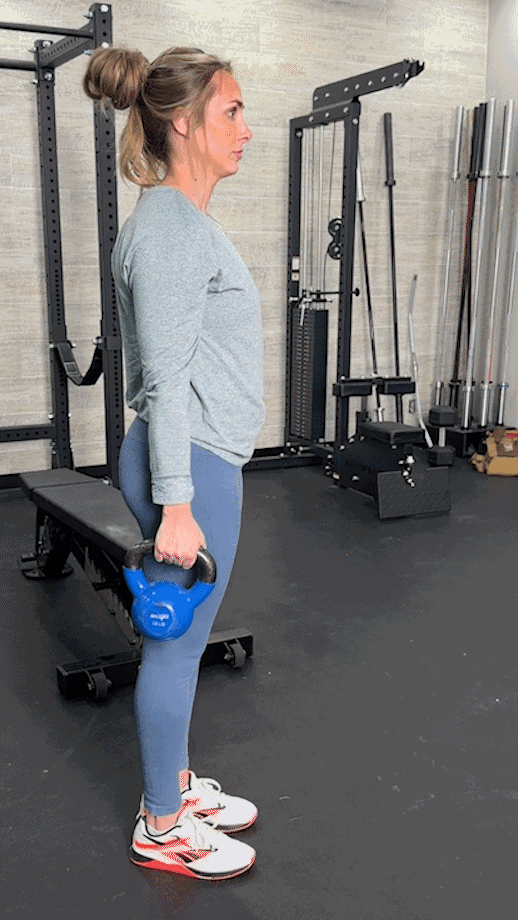
- Hold the kettlebells with neutral grip (palms facing in).
- Curl both bells up simultaneously.
- Keep your elbows close to your torso.
Benefits:
- Targets brachialis and brachioradialis (muscles that push your biceps up)
- Improves arm thickness
3. Kettlebell Concentration Curl
Strict form meets full contraction.
How to:
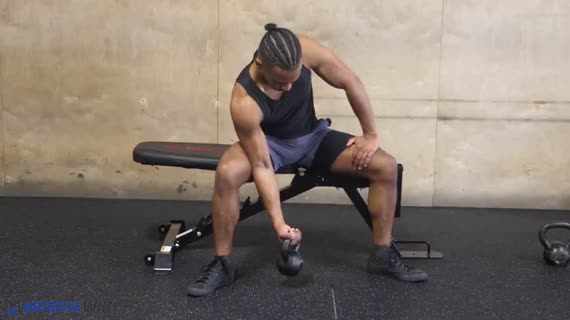
- Sit on a bench, and lean slightly forward.
- Hold the kettlebell with one hand, and rest your elbow inside your thigh.
- Curl slowly, then lower.
Benefits:
- Isolates the biceps
- Eliminates body momentum
4. Kettlebell Zottman Curl
A 2-in-1 arm crusher.
How to:
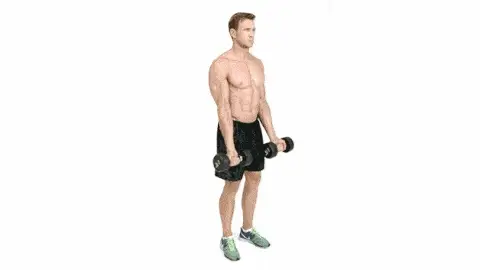
- Curl the kettlebell up with a palm-up grip.
- At the top, rotate your palm down.
- Lower slowly with this new grip.
Benefits:
- Works both concentric (bicep) and eccentric (forearm) phases
- Builds wrist endurance
Myth Buster: You don’t need heavy weights to build biceps—time under tension with controlled reps works wonders!
Also Read: From Average to Alpha: 14 Dumbbell Workouts for Bigger Biceps
5. Kettlebell Preacher Curl (using an incline bench or thigh support)
Old-school precision in a kettlebell way.
How to:
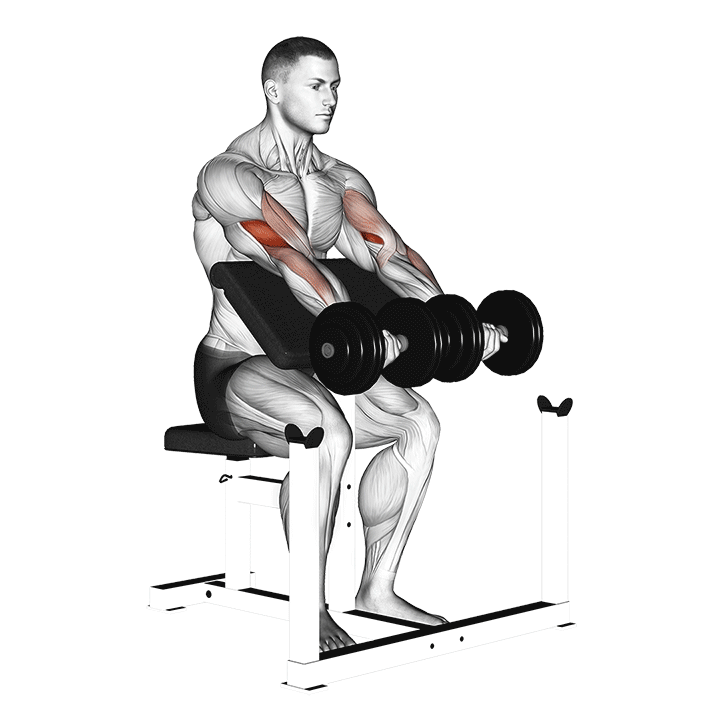
- Place your upper arm against an incline bench or across your thigh.
- Curl the kettlebell with full focus.
- Lower slowly.
Benefits:
- Locks your shoulder, maximizing bicep isolation
- Reduces cheating
6. Kettlebell Cross-Body Curl
This curls across your body, activating different fibers.
How to:

- Hold the kettlebell in one hand.
- Curl across your chest toward the opposite shoulder.
- Lower back diagonally.
Benefits:
- Hits the short head of the biceps
- Enhances inner arm definition
7. Kettlebell Clean (Biceps-Focused)
Not your usual clean. Slow it down, feel the squeeze.
How to:
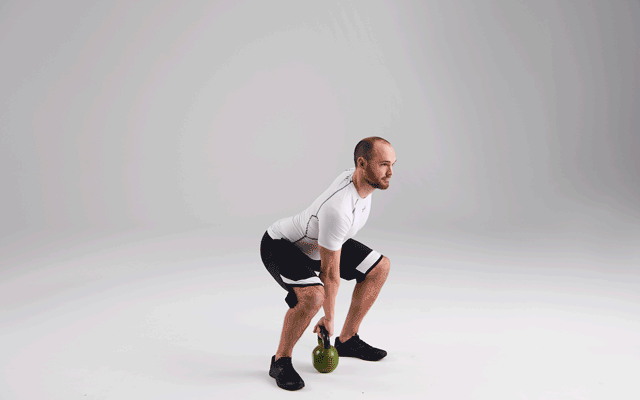
- Start with the kettlebell between your legs.
- Pull it up using your biceps and clean to rack position.
- Use less hip thrust—more arm pull.
Benefits:
- Engages biceps dynamically
- Adds functional strength
Also Read: 13 Dumbbell Chest Workouts That Build Size & Definition Fast
8. Kettlebell Curl to Press
More muscles. More gains.
How to:
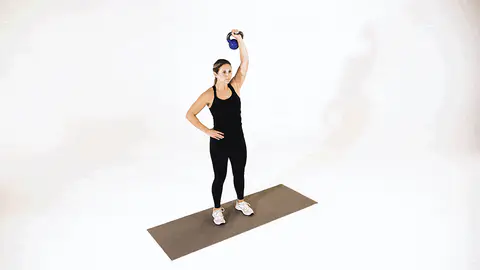
- Curl the kettlebells.
- At the top, rotate and press overhead.
- Lower and repeat.
Benefits:
- Biceps + shoulders = full upper-arm burn
- Builds endurance and compound strength
9. Kettlebell Incline Curl (use an incline or lean back)
Stretch + squeeze = muscle growth.
How to:

- Lean against a bench or wall at an incline.
- Curl the kettlebell while keeping your arms behind your body.
- Focus on the stretch at the bottom.
Benefits:
- Maximizes long head activation
- Deep biceps stretch
10. Kettlebell Isometric Curl Hold
Time under tension—extended.
How to:
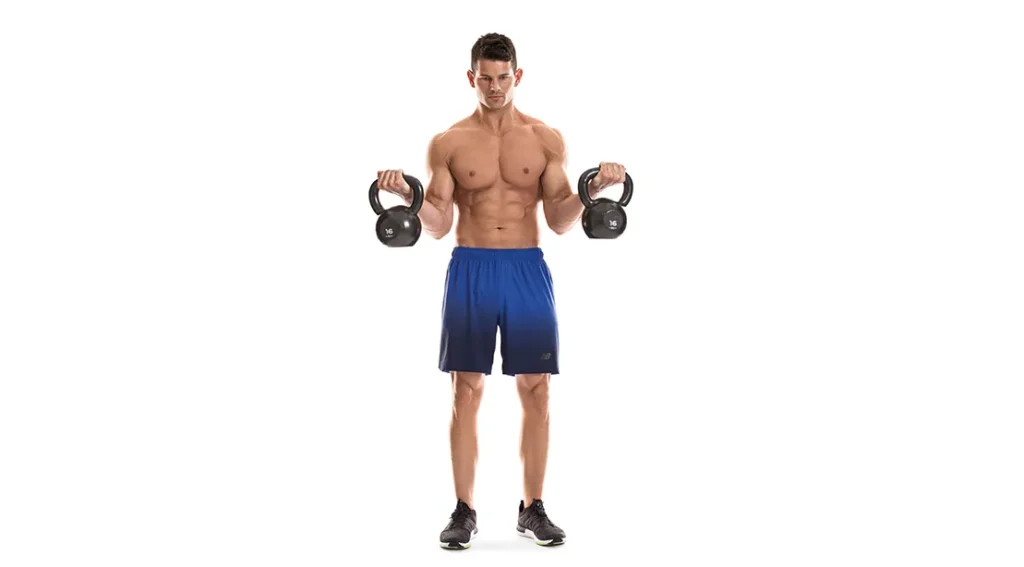
- Curl kettlebells halfway and hold for 10–30 seconds.
- Focus on contracting your biceps as hard as possible.
Benefits:
- Creates constant tension
- Enhances mind-muscle connection
Interesting Fact: Isometrics can recruit up to 5% more muscle fibers than standard reps, according to strength studies.
Also Read: 13 Equipment-Based Calf Exercises to Power Up Your Lower Legs
Final Thoughts
If you’re only using dumbbells for biceps, you’re missing out on the functional strength, unique tension, and grip development that kettlebells bring to the table.
Incorporate 3–4 of these kettlebell biceps exercises into your weekly training and watch your arms not just grow—but evolve.
No more curling in a straight line—think dynamic, think kettlebell.
Frequently Asked Questions (FAQs)
Can you really build big biceps with kettlebells?
Yes. Kettlebells create a unique resistance challenge due to their off-center weight. This increases muscle activation in the biceps and forearms, helping to build both size and strength effectively—especially when performed with strict form and progressive overload.
How often should I train my biceps with kettlebells?
You can train your biceps 2–3 times per week, depending on your recovery and overall workout split. Make sure to allow at least 48 hours between sessions for optimal muscle recovery and growth.
What weight kettlebell is best for bicep curls?
Start with a moderate weight that allows you to perform 8–12 controlled reps. For beginners, this could be 8–12 kg (18–26 lbs). The key is control—not swinging the weight or using momentum.
Are kettlebells better than dumbbells for biceps?
Not necessarily better, but different. Kettlebells challenge stabilizers more, especially the forearms and grip. Mixing both in your routine can help you gain fuller development and avoid plateaus.
Do kettlebell curls also work other muscles?
Yes. Aside from biceps, kettlebell curls also engage the forearms, shoulders, and core, especially due to the unstable nature of the kettlebell. Some variations even work the back and triceps.
How long does it take to see biceps growth with kettlebells?
With consistent training, proper form, and nutrition, noticeable results can be seen in 4–6 weeks, especially for beginners. Advanced lifters may take longer due to adaptive resistance.
Can women do kettlebell biceps exercises too?
Absolutely! These exercises are gender-neutral. Women benefit just as much, gaining lean muscle tone, better arm definition, and improved upper-body strength.
Is it normal for my forearms to burn during kettlebell curls?
Yes. The kettlebell’s off-balance weight makes the forearms work harder, especially in holding and stabilizing the load. This is actually a bonus for building grip and arm strength.
Should I do all 10 exercises in one workout?
Not necessarily. Start with 3–5 exercises, focusing on quality over quantity. Rotate different variations each session to avoid overtraining and keep muscles responding.
What if I only have one kettlebell?
No problem. Most of these exercises can be done unilaterally (one arm at a time). In fact, this can help correct muscle imbalances and improve mind-muscle connection.
